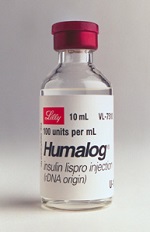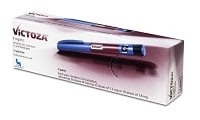The good news about diabetes drugs: Despite some aggressive moves by payers, coverage remains pretty high. The not-so-good news: Pricing pressure is here to stay. And the terrible possibility: Big new drug categories in other diseases, such as immunotherapies for cancer, could capture big chunks of payer budgets, prompting a bigger squeeze on diabetes meds.
 That's the word from Bernstein analyst Ronny Gal, whose team analyzed drug coverage and formulary placement in the diabetes realm. Class by class, the layout differs, but across the board, drugmakers can expect less freedom to raise prices--low-single-digit hikes versus the high-single-digit rises of late--and that's the glass-half-full scenario.
That's the word from Bernstein analyst Ronny Gal, whose team analyzed drug coverage and formulary placement in the diabetes realm. Class by class, the layout differs, but across the board, drugmakers can expect less freedom to raise prices--low-single-digit hikes versus the high-single-digit rises of late--and that's the glass-half-full scenario.
Older drug categories are feeling the biggest pinch, Gal concluded, with flattened pricing on basal insulins--Levemir from Novo Nordisk ($NVO) and Lantus from Sanofi ($SNY), for instance--and fast-acting analogs such as Novo's Novolog and Eli Lilly's ($LLY) Humalog. In the latter group, payers have been playing rivals against each other for exclusive coverage, with half of plans now picking one rival drug over another.
Within those classes, Novo has the best position right now, with Levemir boasting preferred coverage almost across the board, and Novolog winning best-tier placement in about 70% of formularies. That Levemir placement may be why Novo has stolen a "modest" amount of market share from Lantus, Gal suggests, because Lantus now has best-tier placement in just 86% of plans. So far, Sanofi's Lantus follow-up, Toujeo, has ramped up quickly in Part D plans, but still lags on the commercial side--and that may explain its slower-than-expected start.
Lilly's Humalog also has about 70% preferred-tier coverage in the analog insulin world. Levemir and Humalog each is completely blocked in about one-fifth of coverage plans.
 In the GLP-1 field, competition has been heating up with new entrants into the field, including Lilly's Trulicity and GlaxoSmithKline's ($GSK) Tanzeum. Older products Victoza (Novo) and Bydureon and Byetta (AstraZeneca ($AZN)) have "decent" placement, with 70%, 86% and 70%, respectively. The newbies "still have choppy coverage," the analyst writes, particularly as compared with Sanofi's progress on Toujeo. Despite that, they've taken 7% of the GLP-1 market apiece--an "impressive" feat that hints at more growth as the drugs work their way onto more formularies.
In the GLP-1 field, competition has been heating up with new entrants into the field, including Lilly's Trulicity and GlaxoSmithKline's ($GSK) Tanzeum. Older products Victoza (Novo) and Bydureon and Byetta (AstraZeneca ($AZN)) have "decent" placement, with 70%, 86% and 70%, respectively. The newbies "still have choppy coverage," the analyst writes, particularly as compared with Sanofi's progress on Toujeo. Despite that, they've taken 7% of the GLP-1 market apiece--an "impressive" feat that hints at more growth as the drugs work their way onto more formularies.
Medicare Part D plans, which account for 30% of diabetes drug coverage, offer the most restrictive coverage. They tend to shut out particular brands completely, rather than offering tiered co-pays, for instance.
The big picture? Well, there's cause for some optimism on the pricing side for new products; it's reasonable to hope that the recently launched meds offer enough improvement over older drugs to justify higher prices. On the other hand, drug classes where biosimilars make an appearance--basal insulins, with Eli Lilly and Boehringer Ingelheim's Lantus biosim, for instance--could see prices actually decline, because the advantages of newer drugs might not offset payers' desire to damp down costs. Which scenario is likely to manifest itself? "Our take is that the verdict is still out," Gal says.
And here's the scary prospect--that much-anticipated new drug classes in other fields will steal the thunder from improvements in diabetes. "The new diabetes prospects will be adopted only if there is enough money left in the coffers after paying for PD-1s, CGRP, Alzheimer's drugs, etc.," Gal figures. "If new drug classes fulfill their promise, the new diabetes products may not be able to command the price premium they hope for."
Special Report: Top 10 best-selling diabetes drugs of 2013